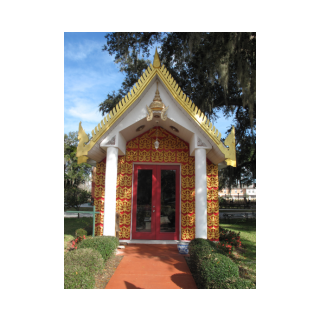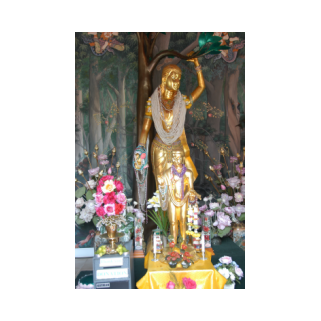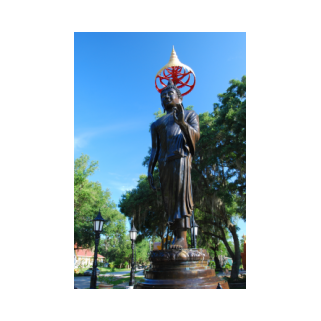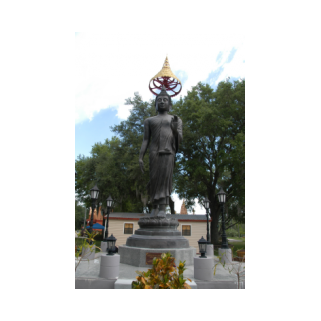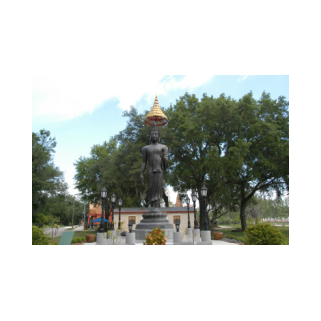The Shrines at Wat Florida Dhammaram
The shrines are situated in a lovely walking park shaded by large southern oaks. Because of the increasing interest throughout the West in the teachings of the Buddha, these replicas are offered as places of pilgrimage for meditation, reflection, education and study.
Lord Buddha mentioned these four sites as follows in the Digha Nikaya 16:
Lord Buddha mentioned these four sites as follows in the Digha Nikaya 16:
"There are four places, Ananda, that a pious person should visit and look upon with feelings of reverence What are the four? "'Here the Tathagata was born!' This, Ananda, is a place that a pious person should visit and look upon with feelings of reverence. "'Here the Tathagata became fully enlightened in unsurpassed, supreme Enlightenment!' This, Ananda, is a place that a pious person should visit and look upon with feelings of reverence. "'Here the Tathagata set rolling the unexcelled Wheel of the Dhamma!' This, Ananda, is a place that a pious person should visit and look upon with feelings of reverence. "'Here the Tathagata passed away into the state of Nibbana in which no element of clinging remains!' This, Ananda, is a place that a pious person should visit and look upon with feelings of reverence. "These, Ananda, are the four places that a pious person should visit and look upon with feelings of reverence. And truly there will come to these places, Ananda, pious bhikkhus and bhikkhunis, laymen and laywomen, reflecting: 'Here the Tathagata was born! Here the Tathagata became fully enlightened in unsurpassed, supreme Enlightenment! Here the Tathagata set rolling the unexcelled Wheel of the Dhamma! Here the Tathagata passed away into the state of Nibbana in which no element of clinging remains!"
Lord Buddha enters
Parinibbana.
Vihara Maha Mayadevi
วิหารพระนางสิริมหามายา
Built in the commemoration of the Buddha's birthplace, Lumbini, Nepal.
Buddhalila
พระพุทธรูปปางลีลา
The walking Buddha posture is known in Thai as "phra lila" Phra lila has a delicate walking posture, with elements of surrealistic in movement reflecting the sculpturing artistic style of earlier Sukothai era which accent and adapt by the modern sculpture in the curved shape of the flow of body.
